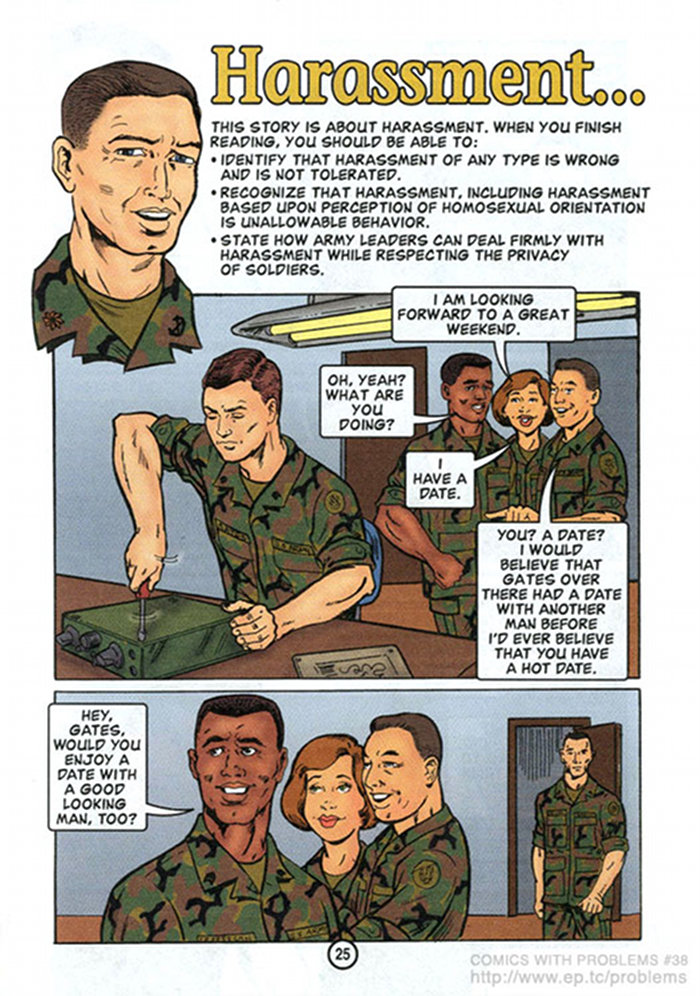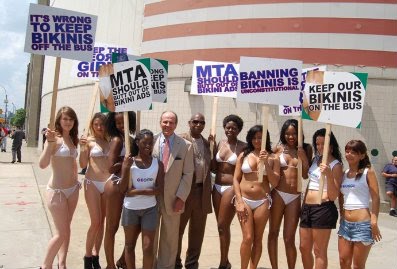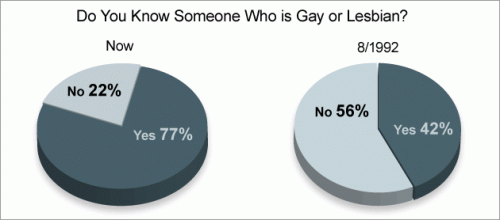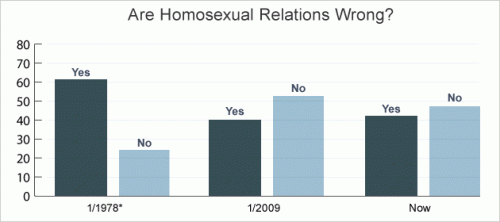Crossposted at Jezebel.
Courtesy of Talking Points Memo (via Comics with Problems), I have for you a link to the entire graphic novel (comic book? I’m not sure what to call this thing) Dignity & Respect: A Training Guide on Homosexual Conduct Policy. Here’s the cover:
If the cover hasn’t clued you in yet, this is a book meant to educate soldiers about the U.S. Army’s 1993 Don’t Ask, Don’t Tell policy (which applies to other branches of the military as well). It covers what the policy means, what to do if you have “credible evidence” that someone is engaging in homosexual activities (being gay is ok, you just can’t do anything), the Army’s anti-harassment policy (you know, you can turn someone in for being gay and ruin their military career, but you can’t be rude), and provides scenarios of situations that might occur and how a soldier should react.
Among other things you can learn that it’s not ok to imply a male soldier would go on a date with another man, but apparently it’s ok to say that no man on earth would ever go out with a female soldier in your unit:
I’m not going to put up every page here, since you can easily get them all at the links above, but it’s worth at least skimming. It’s…something. I cannot imagine that any soldier, even ones who cared about the issue a lot one way or the other, took this book seriously.
I will give them credit, though: the characters are extremely diverse in terms of race/ethnicity and gender.


























